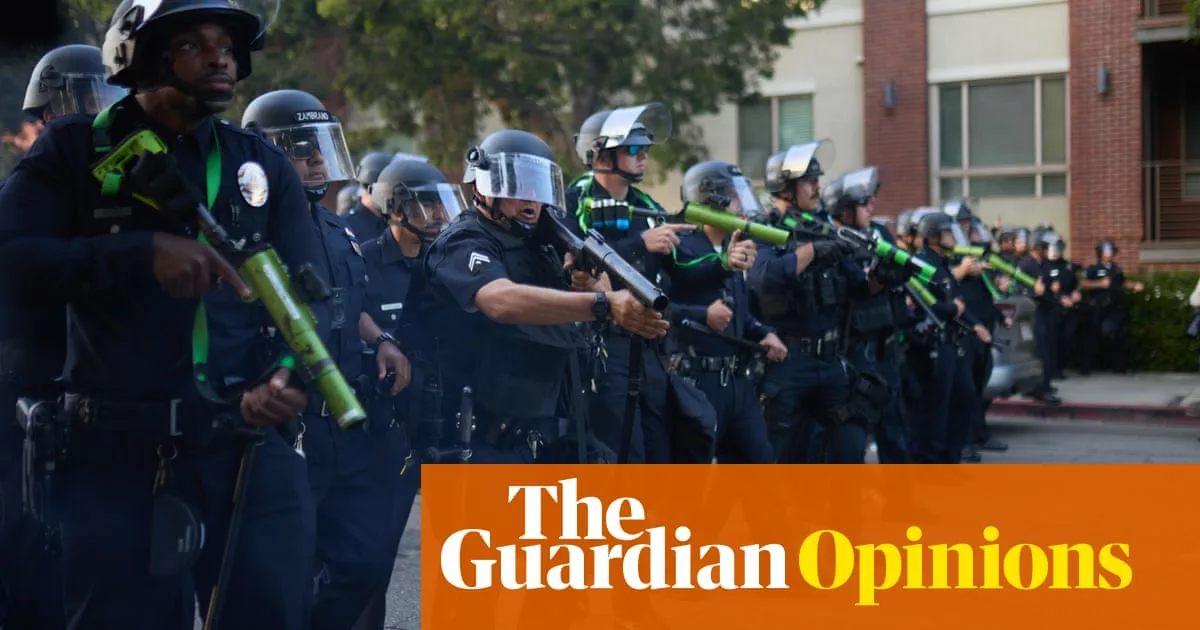Protests across the United States have reignited debates over the rights of demonstrators, particularly regarding the use of masks. Amidst escalating tensions, former President Donald Trump has taken a firm stance against masked protesters, demanding that universities prohibit face coverings at demonstrations and calling for the immediate arrest of anyone who wears a mask during protests. This demand raises critical questions about the principles of free expression and the right to anonymity in the face of potential governmental retribution.
Trump’s position appears contradictory, especially when considering the actions of federal agents, such as those from Immigration and Customs Enforcement (ICE), who often conceal their identities behind masks and unmarked uniforms. This duality underscores a broader issue: the importance of standing by one’s identity while challenging unjust power structures. The right to anonymity, particularly in the context of civil disobedience, has a long-standing tradition in American democracy. As affirmed by the Supreme Court in the mid-1990s, citizens have the right to protect their identities, especially when facing potential backlash for their beliefs.
It is essential to differentiate between lawful protest and civil disobedience. Civil disobedience involves openly breaking the law, as exemplified by figures like Martin Luther King Jr., who advocated for identifiable protests to highlight moral injustices. The intention behind such actions is to draw attention to systemic issues, encouraging the public and authorities to recognize and rectify these injustices. However, the contemporary media landscape complicates this dynamic. Unlike the civil rights movement, which relied on mainstream media to broadcast images of injustice, today’s media environment is fragmented. Messages can be ignored or distorted, often painting peaceful protesters as lawbreakers while downplaying the actions of those in power.
The risks associated with protesting in today’s climate are significant. The Trump administration has demonstrated a willingness to retaliate against individuals who dissent, leading to fears of detentions and deportations. In this context, choosing to mask one’s identity during protests becomes a rational act of self-preservation. Other democracies, such as Canada, have implemented anti-masking laws aimed at preventing violence during riots, not at curtailing free expression. The U.S. must navigate this delicate balance, ensuring that the right to protest is protected without infringing on individual safety.
As protests evolve, many participants now opt to conceal their identities, reflecting a growing awareness of the potential consequences of their actions. This caution is not merely a matter of personal choice; it is a necessary response to an environment where surveillance and facial recognition technologies are increasingly prevalent. The argument that “if you have nothing to hide, you shouldn’t hide your face” fails to consider the implications of pervasive monitoring. The right to privacy and anonymity is crucial to preventing intimidation and retaliation, whether from the state or private entities.
The Supreme Court has historically recognized the importance of anonymity in political expression. In a landmark case, the Court upheld the rights of individuals to remain anonymous when distributing literature opposing a school tax levy, emphasizing that anonymity serves as a safeguard against the tyranny of the majority. Today’s protesters, while not necessarily opposing a popular majority, face a regime that seeks to stifle dissent and retaliate against those who challenge its authority.
While it is true that dialogue is essential in a democratic society, the dynamics of protest must be respected. The act of masking can create an asymmetry in communication, where those who are unmasked engage with those who are concealed. However, the current climate of fear and potential violence necessitates that individuals decide how much they wish to reveal about themselves. The risks involved in protesting—especially in a landscape where law enforcement may respond with aggression—should dictate the level of anonymity individuals feel compelled to adopt.
In conclusion, the right to wear masks during protests should not be criminalized. As citizens engage in lawful demonstrations, their choices regarding anonymity should be respected and understood within the context of a society grappling with issues of surveillance, safety, and free expression. The ongoing dialogue surrounding these rights is vital as America navigates the complexities of protest in an era marked by deep political divisions and heightened tensions. The lessons of history remind us that the right to dissent is foundational to democracy, and protecting that right—regardless of the circumstances—should remain a priority for all.
